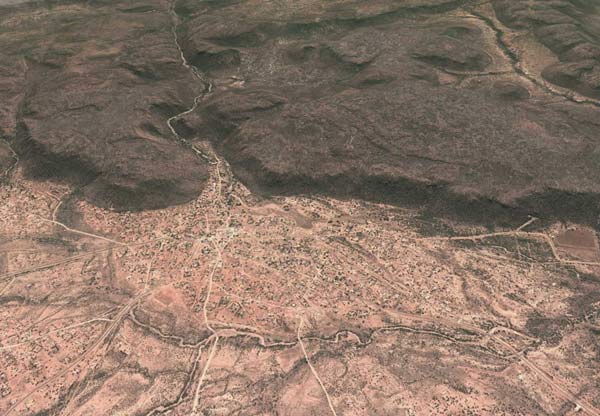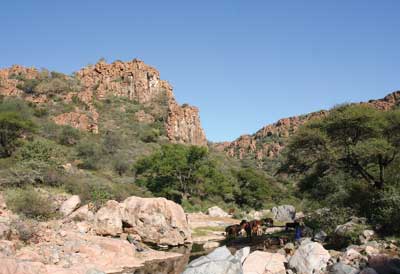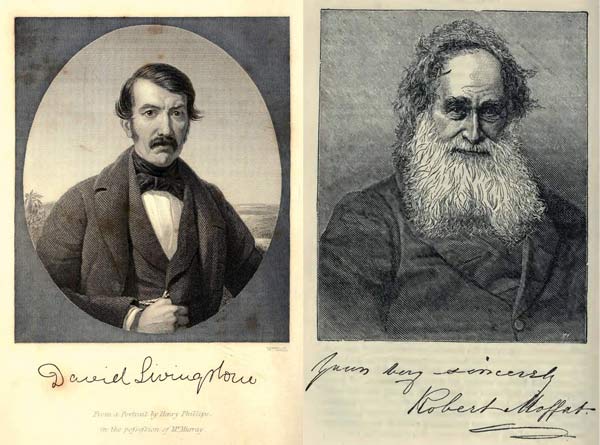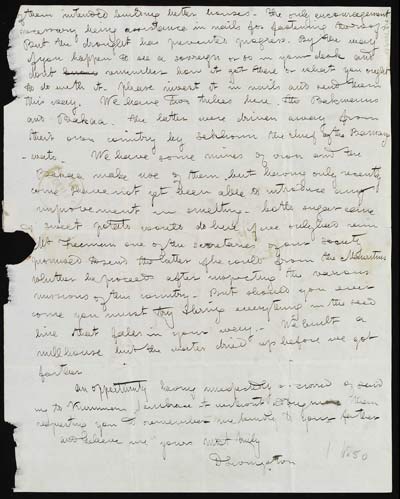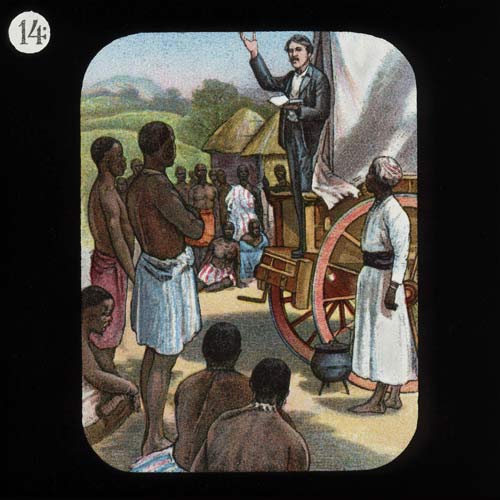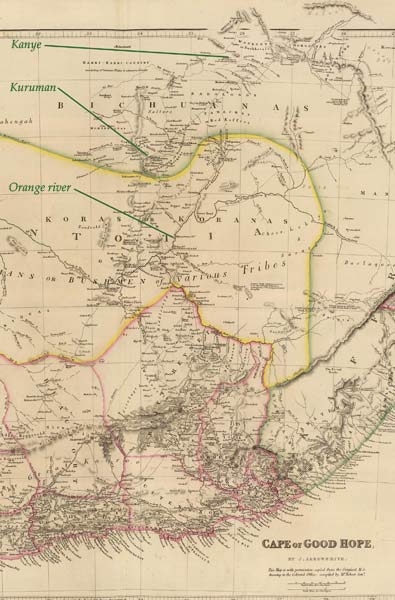Bakaa
In 1842 the Bakaa were inhabiting Shoshong and it had around 250 houses and a population of perhaps 1,500. [1] The Bangwato capital was on nearby Pitsane Hill and had increased to around 600 houses and included various other chiefdoms including Baphaleng and Batalaote. [2] All the people were forced into defensive locations by the Matebele tribesmen who regularly raided for cattle and servants.
The geography of Shoshong with its narrow valley makes it a superbly protectable site. Many people think the name �Shoshong� comes from the setswana �Swasweng� meaning �place of the Leswaswa tree�. However, the Rev Hepburn suggested in 1895 that the name derives from the water source �Leshosho� which flows into the valley. [3]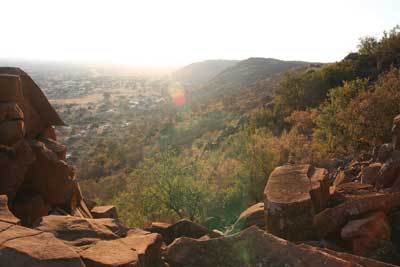
View from the hills © Jacob Knight. The hills are largely heavily fractured ironstone - when freshly broken it is grey in colour, but the surface gradually turns to the rusty brown colour when exposed to air. There are also some intrusions of an attractive pink granite.
Moffat & Livingstone
In 1841 David Livingstone arrived in Cape Town and stayed at the Kuruman mission with Robert Moffat who was busy translating the Bible into Setswana. A year later Livingstone visited the Bangwato and spent two weeks on the hill top at Pitsane. He then walked to the Bakaa tribe with some trepidation since they had recently murdered four white traders. An early white trader R. Gordon Cumming (also from Scotland) came in 1844 and returned several times over the next 5 years. Livingstone started a mission with Kgosi Sechele and the Bakwena at their capital Kolobeng (near modern day Thamaga) in 1847, and in 1849 he journeyed north again with Mr Oswald and Murray and �discovered� Lake Ngami. [5,6] Moffat will have passed through Shoshong several times on his way to visit the Matebele.Defeat of the Bakaa
In 1849 Sekgoma of the Bangwato attacked the Bakaa, around 1,200 of whom fled to join the Bakwena at Kolobeng. Livingstone described the Bakaa as being �persecuted by the Bangwato who had guns and were terrorising the area.� [7] When passing through Shoshong in June 1849, Moffat noted: It being hopeless at the present time to get either Sekhomi or his people to listen to instruction, we left in the afternoon, and ... halted at the end of the mountains where the Bakaa tribe formerly lived, and where, though the owners of the country, they were terribly harassed by the Bamanguato ... Sekhomi did everything in his power to annoy the Bakaas, who were always reported to be a peaceable people. They at last abandoned their native hills, and, encouraged by Sechele, fled to the Bakuanas, where they now live in comparative peace. [8] Some see the motivation for Sekgoma�s attack as a �divide and rule� tactic to split the powerful alliance between the Bakaa and Baphaleng. Others see it as revenge for the Bakaa�s defeat of the Bakhurutshe, or simply because Sekgoma wanted to set his capital in the Shoshong valley. Two years later, when Livingstone returned after more travels to visit Kgosi Sebituane north of the Chobe River (he had passed through the Shoshong area and was given a guide by Sekgoma), he found that the Bakwena and Bakaa had left Kolobeng for nearby Dimawe. In 1852 the Boers attacked Dimawe, and while neither side was able to declare it a victory, the Boers were made to realise that they would face severe resistance and they did not attempt further penetration into the area. In their frustration the Boers destroyed Livingstone�s mission in Kolobeng in the belief that he had taught the Batswana to fight with guns.References
[1] Parsons N (1982) �Settlement in East-Central Botswana circa 1800-1920� (from �Settlement in Botswana� Edited Hitchcock R and Smith M (1982) Botswana Society)[2] Morion B (1993) �Pre-1904 Population Estimates of the Tswana.� Botswana Notes & Records Vol 25
[3] Hepburn J.D (1895) �Twenty Years in Khama�s Country.� Hodder & Stoughton
[4] Parsons N (1972) �Khama�s own Account of Himself.� Botswana Notes & Records Vol 4
[5] Livingstone D (1857) �Missionary Travels and Researches in South Africa.� Harper & Brother Publishers
[6] Mackenzie R (1993) �David Livingstone - the truth behind the legend� Fig Tree Publications
[7] Parsons JW (1997) �The Livingtsones at Kolobeng 1847-1852� The Botswana Society
[8] Moffat R (1844) �Scenes and Adventures in Africa.� Philadelphia Presbyterian Board of Publication

